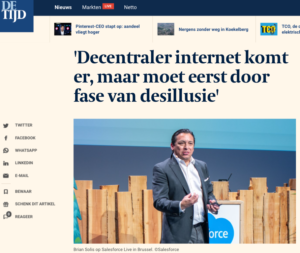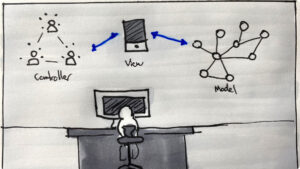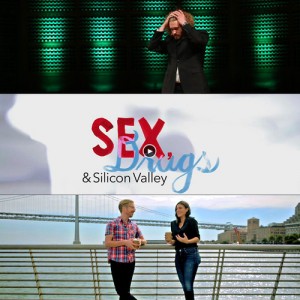I have been diving head first into the emerging realm of Web 2.0, and I have to say, damn if it doesn’t feel like the 90’s all over again. I mean, the only thing missing here are the inflated marketing and PR budgets, rooftop parties, and gigantic, celebrity-studded events associated with marketing anything.com for everyone.com.
The interesting thing here though, is that the Valley is so anxious for a resurgence that we’ve already leapt beyond the early adopter stage straight to the early market majority. Some are already blaming the notorious “Hype Machine” for creating what might be a premature frenzy.
Now seemingly everyone is 2.0…with RSS feeds, tags, trackbacks, hosted applications, etc. Unfortunately, in my opinion, most of these new companies are merely hohum dotcoms in disguise, hoping for a shot at stardom under the thinly veiled shroud of “interactivity.”
But honestly, ever since O’Reilly and Arrington and the Web 2.0 Workgroup started to rise to rock star status, it seems that we’re losing sight of the original foundation for 2.0 and its evolution from static to interactive.
Web 2.0, in my research and my experience with 2.0 startups, held the essence of creating a more visitor-driven or customer-centric experience; meaning, that rather than click and serve, we are evolving to click, read, interact, and be heard!
Is Web 2.0 evolving into the next dotcom? It seems that many companies are misusing the 2.0 moniker as a way of saying, “we’re a whole new Web solution for a whole new e-conomy, look at us.” When in reality, they’re just a new product with a new approach using the latest technology. If that’s the case, then I’m typing on my keyboard 2.0 (because it’s the second generation wireless upgrade). I’m also using a teleconference 2.0 solution because I’m using Skype instead of a real phone. Oh, and that’s right, I’m also using my headset 2.0 with my Treo because it’s wireless and an upgrade from my lame, original wired headset.
Really though, other than new tools, the concept of blogging, forums, forms, newsletters, layers, etc. all provide a more enriched and engaging experience for customers and prospects. Web 2.0 is at its core, the idea of connecting businesses and people to provide a better organic relationship and more grassroots foundation for growth.
Stay tuned. More info, references and links to come…
“Designing for Web 2.0 will not be about technology for designers. No? No, it will be about people. It will be about designing stuff that people use and all that goes along with it.”
– Mark Boulton
“I think of web 2.0 as the inevitable evolution of the web from a read-mostly medium to a read-write, or two-way medium (think geocities v. weblogs). Web 1.0 was static html pages. Web 2.0 is dynamic and interactive.”
– Michael Arrington
A friend of mine, Ivaylo Lenkov, recently wrote a great article regarding Web 2.0 for SMBs.
Tags: web 2.0, web2.0, michael arrington, sitekreator, oreilly, rss, techcrunch






It is inevitable that the evolution is coming and is happening. I was in a sense forced to upgrade my website from static html based pages to php based pagees. Why???…. better technology. My site will now allow updates to be made by people who pay for the advertising. I will not have to lift a finger and the site will be update. It obviously will have a rss feed for daily music news and blog section and other cool features that would be very difficult to mangage with static html pages. Whats really exiting is the technology that is still come….I feel this is only the start.
-Luis 🙂
The actual definition of web 2.0 varies considerably.
O’Reilly coine and defined it here.
Really mates I’m so pleased to read that inspirational content though. I’m pleased to know that input whatever you published. By the way I like this theme so educative for Web 2.0 vs. Dotcom 2.0 issue. Thanks!